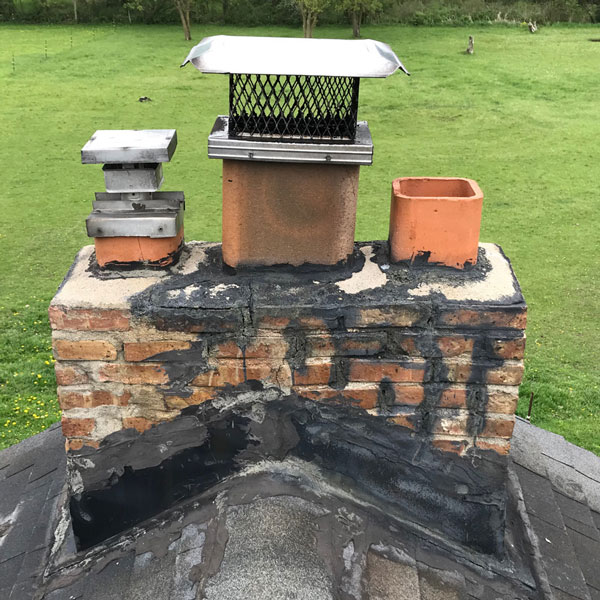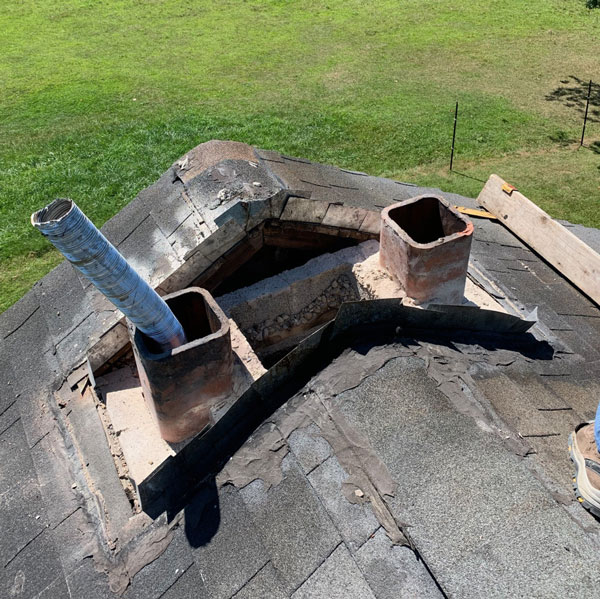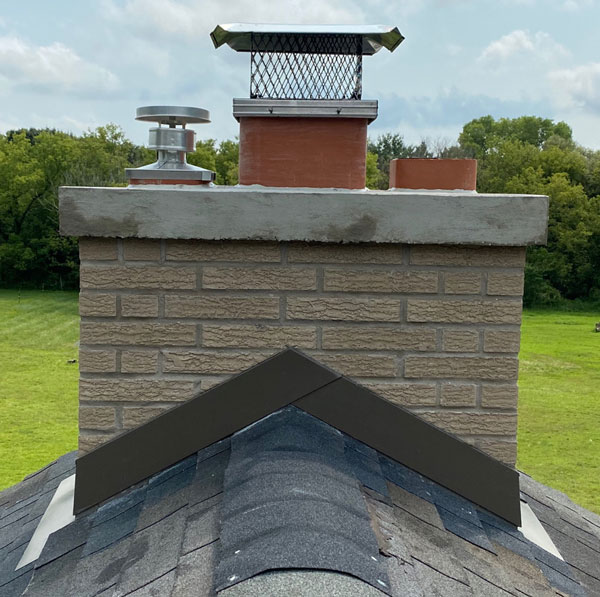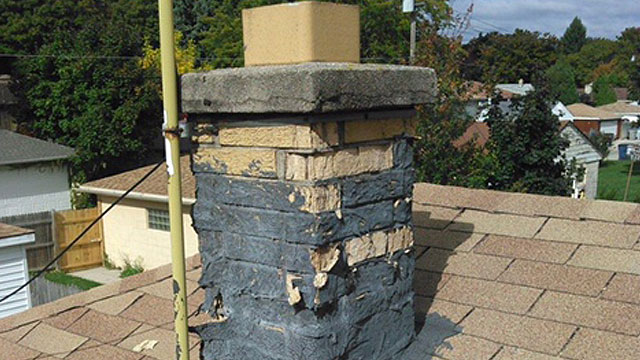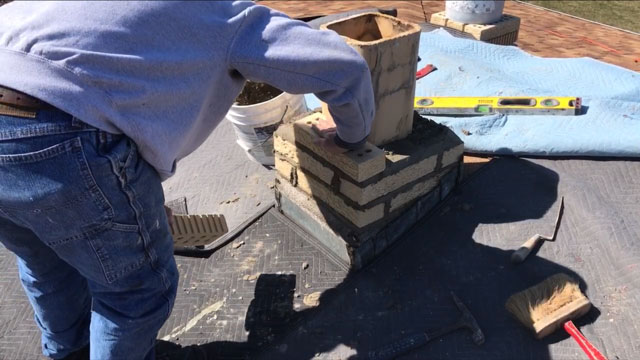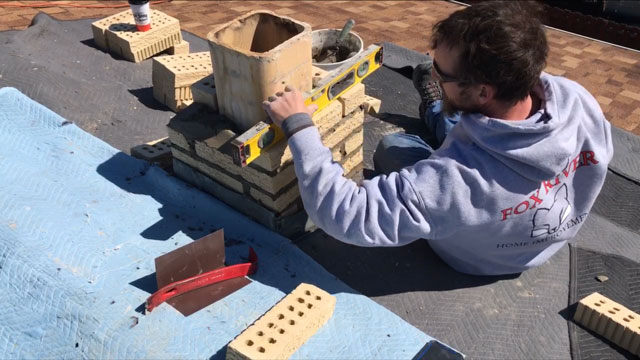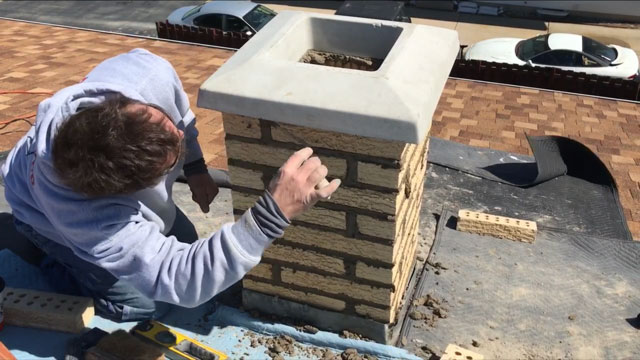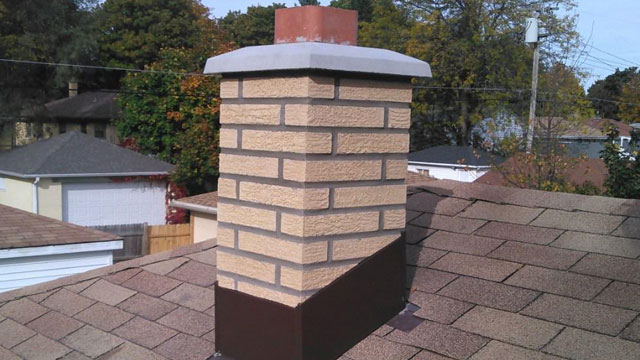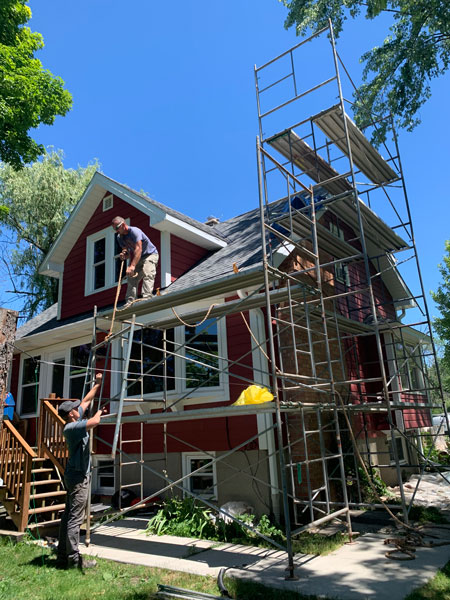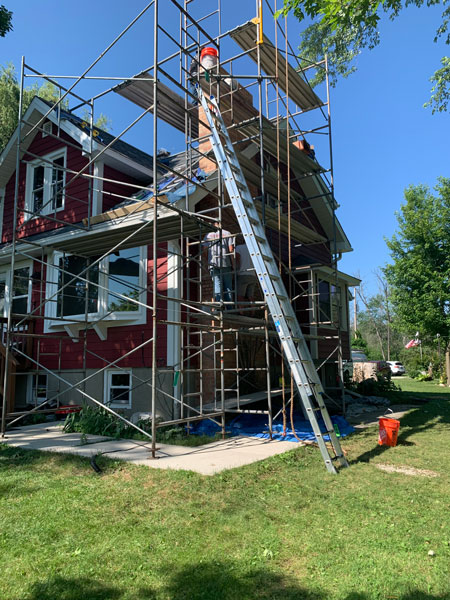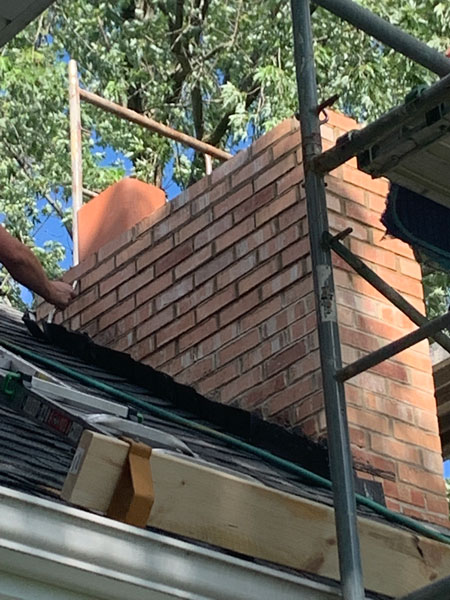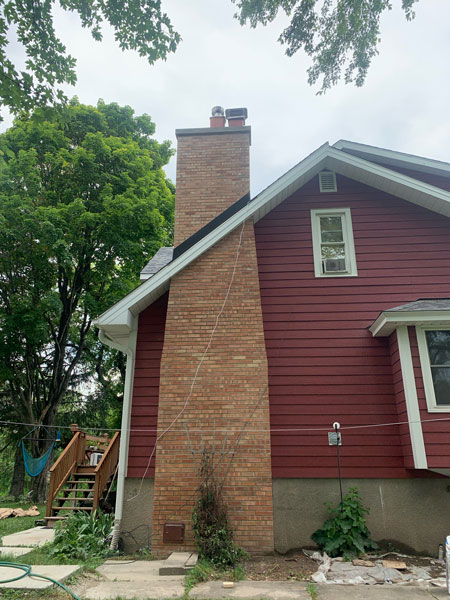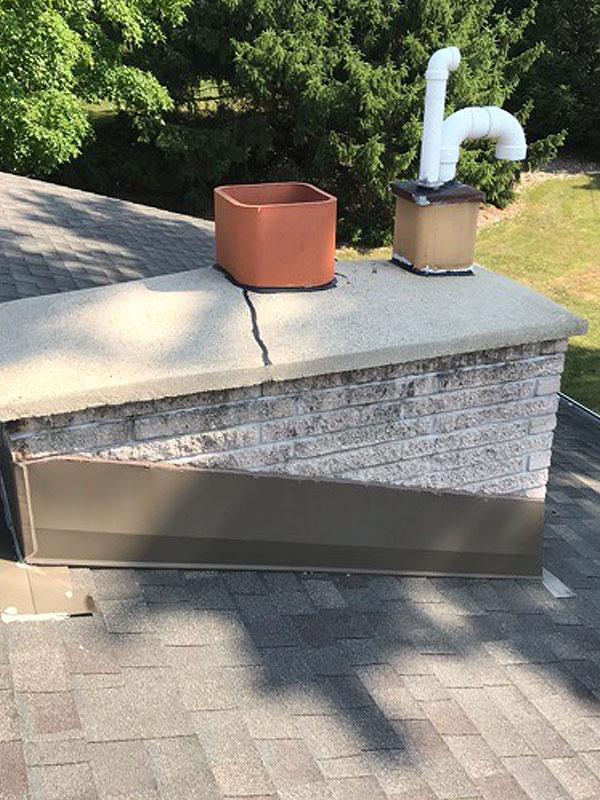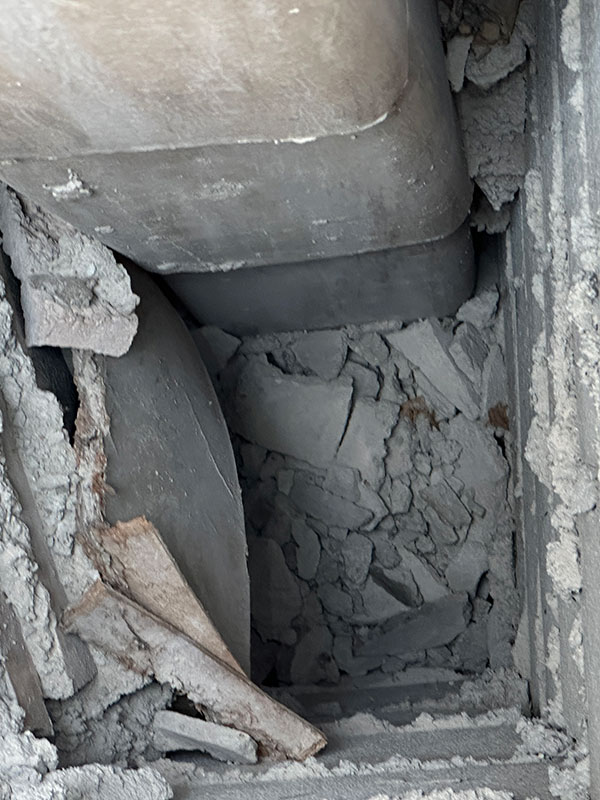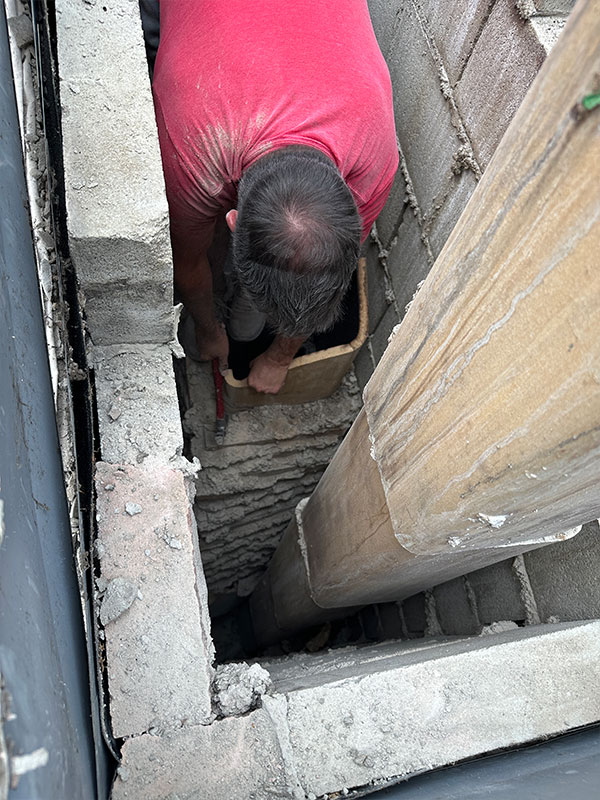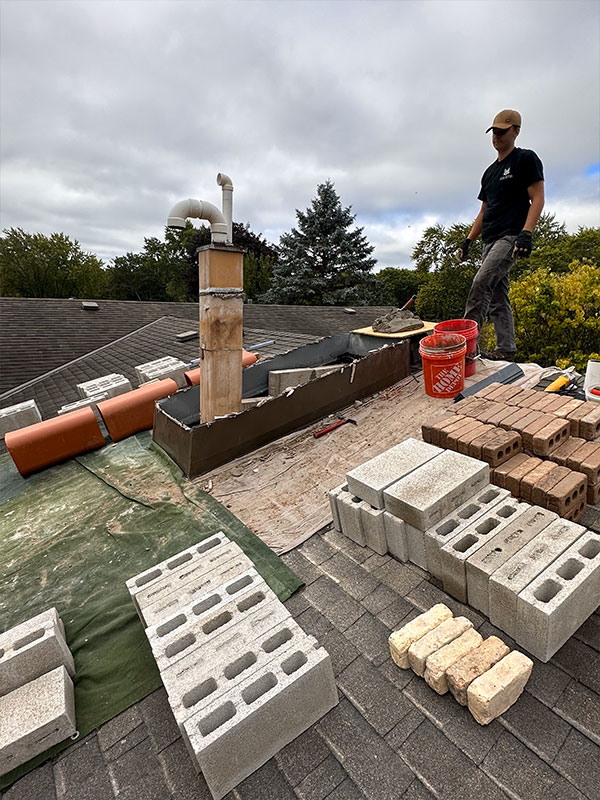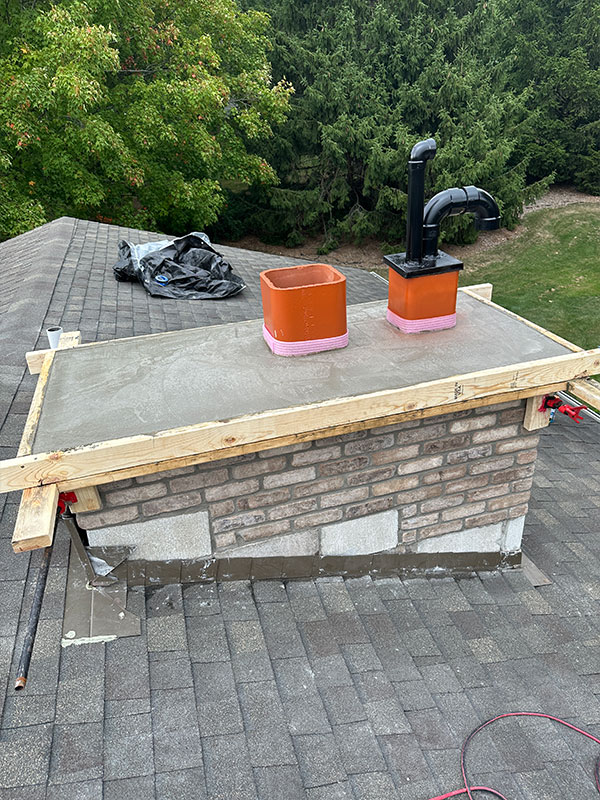Chimney Rebuilding
Why Chimney Rebuilding May Be Urgent
Chimney rebuilding becomes urgent when bricks crumble, mortar washes out, or the flue leans. Because gaps that grow wider than a pencil can leak carbon monoxide and drop hot embers, you must act without delay. Therefore, once you spot any of these issues, schedule a certified sweep or mason right away.
Quick-Check Warning Signs
- Spalling Bricks: Bricks flake or pop off.
- Efflorescence: White, salty stains appear on masonry.
- Water Rings: You see dark spots on ceilings near the firebox.
- Stack Sway: The chimney tilts when you gently push it.
If you notice even one sign, phone a pro mason immediately.
How Pros Check the Damage
First, a mason feeds a small camera into the flue to spot hidden cracks. Then, they tap bricks and inspect the crown for splits. So, you learn whether a partial rebuild from the roof line up is enough or if a full teardown is safer. Because each chimney is unique, this early scan sets a clear plan and avoids surprises later.
Step-by-Step Chimney Rebuild
- Safe Teardown: Crews remove loose bricks from the top down, meanwhile catching debris.
- Fresh Footing: If needed, they pour new concrete under the stack to ensure solid support.
- New Brickwork: Masons rebuild the shaft course by course with weatherproof mortar.
- Flue-Liner Reset: Next, they install a new clay or stainless liner to boost draft and trap heat.
- Water Seal: Finally, they add a cast crown, secure flashing, and fit a sturdy cap to keep out rain, snow, and critters.
Each step follows local codes, therefore your rebuilt chimney stands straight and vents smoke safely for decades.
Key Cost Points to Weigh
- Height: Taller stacks need more labor.
- Material: Brick, stone, or specialty liners affect cost.
- Liner Choice: Clay, aluminum, or stainless steel vary in price.
- Access: Scaffolding needs add to the bill.
However, one full rebuild often costs less than many small patches plus water damage repairs. Meanwhile, if storms or falling trees caused the harm, your insurance may cover part of the cost—so ask your agent before work starts.
Easy Care After Rebuild
- Annual Sweep: First, book a chimney sweep and safety check each year.
- Seal Application: Then, apply a breathable water repellent every five years.
- Cap Screen Swap: Finally, replace the mesh screen at the first sign of rust.
By following these simple steps, you keep mortar tight, prevent leaks, and enjoy safe fires for many seasons.
When Chimney Rebuilding Turns Urgent
When chimney rebuilding turns urgent, small cracks can lead to big troubles. Because water seeps in, bricks crumble faster. Therefore, you may need a full rebuild rather than another patch.
Quick Warning Signs
- Long Cracks: Cracks run through several bricks.
- Crumbling Bricks: Bricks break off when touched.
- Smoke Marks: Soot stains appear inside.
- Leaning Stack: The chimney tilts away from the roof.
If you spot two or more signs, call a certified sweep right away.
How Pros Check the Damage
First, the mason slides a camera up the flue to find hidden breaks. Next, they tap bricks for hollow spots. Then, they inspect the crown for gaps. With these steps, you learn if a small repair works or if full chimney rebuilding is safer.
Five Easy Steps to Rebuild a Chimney
- Plan & Permit: First, crews list damage, pull permits, and set up safe debris removal.
- Careful Teardown: Then, workers lift bricks off from the top down to keep debris off the roof.
- New Footing: Next, they pour fresh concrete under a cracked base, thus ensuring a firm stand.
- Fresh Brickwork: Meanwhile, masons rebuild row by row with strong mortar and install a stainless liner to boost draft.
- Weather Shield: Finally, they add a concrete cap, tight flashing, and a steel cap to block rain, snow, and animals. Then, a water-seal spray keeps walls dry.
Cost Points to Expect
Price varies by height, brick type, and liner choice. However, one full rebuild often costs less than years of small fixes plus roof repairs. Meanwhile, check if storms caused damage—your insurance may help.
Extra Wins After a Rebuild
- Tighter walls lower heating bills.
- A straight stack boosts curb appeal.
- New parts meet today’s safety codes.
Simple Care Tips
- Book a yearly sweep and safety check.
- Brush on a water seal every five years.
- Clear leaves from the cap screen each fall.
Follow these steps, and your rebuilt chimney will serve many cozy seasons.
Appliance Chimney Rebuild
When Chimney Rebuilding Can’t Wait
When chimney rebuilding can’t wait, small cracks may seem minor. However, once bricks flake or mortar joints widen, danger grows fast. Therefore, you must move from repair plans to a full rebuild right away.
Easy-to-Spot Warning Signs
- Spalling Bricks: Chips or flakes fall off bricks.
- Wide Joints: Pencil-wide gaps appear between mortar lines.
- White Stains: Efflorescence marks the chimney face.
- Leaning Stack: The chimney tilts away from the roof.
- Indoor Leaks: Musty smells or water spots appear inside.
If you see two or more signs, call a certified sweep immediately.
How Pros Check Damage
First, a mason snakes a camera up the flue to find cracks. Next, they tap bricks for hollow sounds. Then, they inspect the crown for gaps. Therefore, you quickly learn if a small roof-line rebuild works or if a full tear-down is safer.
The Five-Step Chimney Rebuild Process
- Safe Teardown: Crews remove loose bricks from top down, so debris stays off shingles.
- Solid Foundation: If footing cracks appear, they pour reinforced concrete; as a result, the new stack stands firm.
- Fresh Masonry: Brick or stone rises course by course with strong mortar, while weep holes let moisture escape.
- Modern Flue Liner: Many choose stainless steel because it resists heat and acids, which boosts draft.
- Weather Defense: Finally, a cast crown, tight flashing, and steel cap seal the top, while a breathable spray blocks rain.
Key Cost Factors
Because price varies, four points set the cost:
- Height and width of the stack
- Brick or stone style you choose
- Liner material—clay, aluminum, or stainless
- Roof access time and scaffold hours
Even so, one full rebuild often costs less than years of patches plus interior leak repairs. Moreover, check if insurance covers storm damage.
Extra Benefits Beyond Safety
Because new masonry seals gaps, warm air stays inside longer; therefore, energy bills drop. In addition, a straight, clean chimney lifts curb appeal and can boost resale value.
Simple Care After the Rebuild
- Schedule an annual sweep and safety check.
- Reseal exterior brick every five years.
- Replace the cap screen at the first sign of rust.
By following these quick steps, you keep mortar tight and protect your investment for many cozy seasons to come.
Chimney Rebuild With Scaffolding
chimney rebuild
Honest, Affordable & Experienced
Because we’re honest, affordable, and experienced, we’re the clear choice for your home improvement needs.
What Fox River Clients Are Saying


